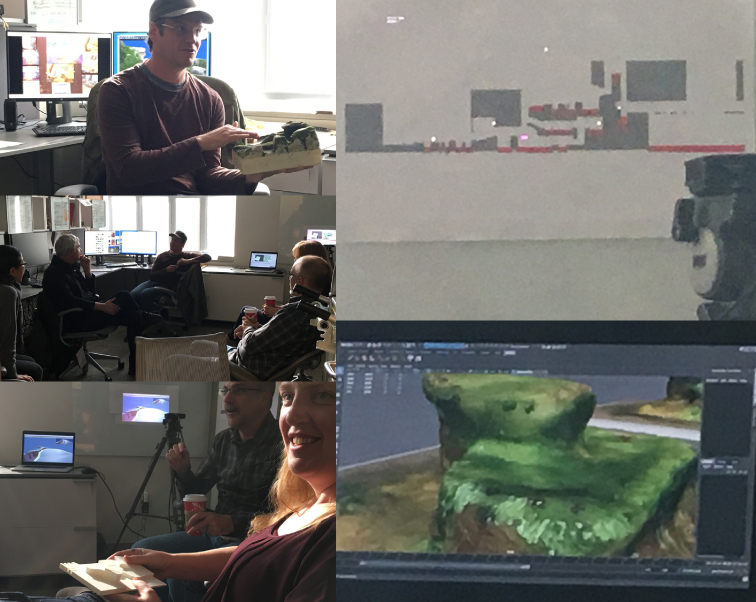As the Humane Technologies research team first began contemplating the 2016-2017 "Livable Futures" theme in Autumn semester, we held a series of sandbox sessions in the ACCAD labs and studios, each led by a different team member. The purpose of these sandboxes was to engage in a "doing thinking" process together with various humane technology frameworks in order to explore potential lines of inquiry, develop research questions, and build relationships. What follows are notes developed in conjunction with this particular sandbox session.
Sandbox: Whitebox with Scott Swearingen
Wednesday, November 16, 9:30-11:30am at ACCAD
Attendees: Scott Swearingen, Kyoung Swearingen, Norah Zuniga Shaw, Alice Grishchenko, Stephen Turk, Mindi Rhoades, Alan Price, Peter Chan
Anticipation / Expectation:
• Connecting virtual and physical experience…
• Digitizing the physical world using photogrammetry has become part of our common
vernacular in the creation of digital characters, assets, and more recently, full environments. However, this technology is often employed from a production-oriented perspective that is more design-agnostic than design-centric. By incorporating 3D-printing into the process, our new pipeline seeks to preserve design intent, and help maximize the value that designers as well as artists contribute to the creation of virtual environments.
• The point at which we deviate from typical production pipelines is after the creation of the white-box. The white-box is a low-resolution collision model that serves as the foundation for all interactions between the 'player' and the 3D world in terms of mechanics, collision, layout and flow. Because 'player' interactions within virtual spaces are so inextricably tied to the collision model of the white-box, using a 3D printer would ensure that the collision model's integrity would also be preserved as it was converted to a physical format. With a physical print of the white-box in hand, sculptors and painters can now create artwork for it, and focus their efforts in a more design-oriented approach. Once the physical sculpture is complete, it is digitized using photogrammetry and integrated with the original white-box.
• This workshop aims to discover opportunities that broaden collaborations between physical and digital artists in computer graphics production. It also seeks presenters who are interested in utilizing existing technologies (such as 3D-printing and photogrammetry) in new and innovative ways. In addition, our pipeline is visually very flexible, and should be of great interest to a wide spectrum of artists, educators, and studios.
• Can we make physical component more ‘player-facing’ rather than only ‘developer-facing’ as dictated by the process?
• What can we discover about other prototyping models that could benefit from our process?
• What alternative digital-physical methodologies could help to steer our research?
• What are the best ways to develop our shared understanding and collaborative relationships?
Disposition / Experience:
• The Whitebox is mechanics (verbs)-driven in its employment of metrics, but more narrative-driven in terms of layout and flow.
• Build in a modular fashion to help reach visual parity with concept.
• How adaptable is the process to varying skill sets, how easily can it be experienced front-to-back?
• The process of alignment is the 'grayest' and most loose step, and could be difficult for a beginner to find success here.
• Are there opportunities to receive (or design with!) other sensory input, especially considering the physical<->digital pipeline.
• Much potential to evolve (and expand) into other domains.
• Desire exists within group to make the player-facing components more physical, not just the developer-facing ones.
• Plan to make an analog prototype.
• Very curious about application (from game to augment with masked animation for narrative and atmospherics.
• Has potential to draw on multiple disciplines.
Reflection / Opportunity:
• Opportunities and interest overlaps with architecture. This is the future of architectural presentation.
• Narrative design at its best when complimented by mechanics (and vice versa)
• Terminology can be an obstacle when communicating process across disciplines.
